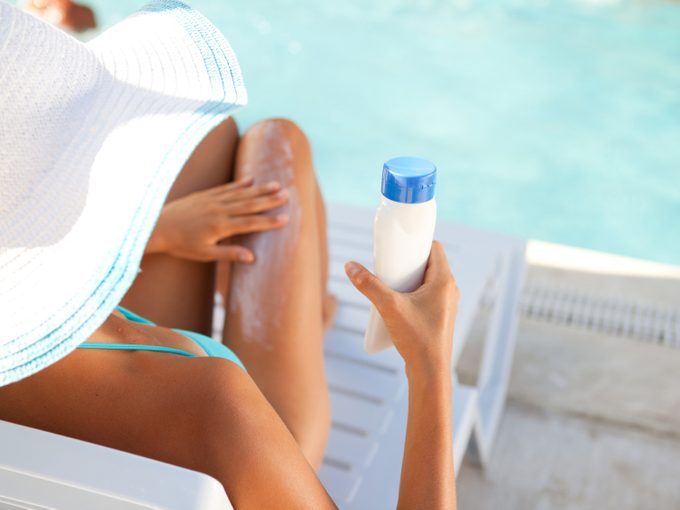What to Look for When Buying a Sunscreen
Navigating the sunscreen aisle can be confusing. For clarity, Health Canada has created labelling standards for sunscreens sold in our country. Here’s your guide to the new standards

Now, before any products hit store shelves, they must include specific labelling information about SPF and more. Here are the highlights:
#1 The ground rules
All sunscreen products must state the following:
‘ Apply liberally/generously (and evenly) 15 minutes before sun exposure.
‘ Reapply at least every two hours.
‘ For use on children less than six months of age, consult a healthcare practitioner.
#2 Labelling
All sunscreen products must say they help prevent sunburn and list the amount of sun protection factor (SPF). Products containing combination of UVA and UVB ingredients may say ‘broad spectrum’ on their labels, but a UVA symbol is not required.
#3 Minimum protection
A sunscreen with broad-spectrum coverage with SPF 15 or higher can claim that it decreases the risk of skin cancer and early skin aging caused by the sun IF used as directed with other sun protection measures, such as limiting time in the sun, especially from 10 a.m. ‘ 2 p.m., and wearing protective clothing.
A product that is not ‘broad spectrum’ with SPF less than 15 must carry this label: Skin cancer/skin aging alert: ‘Spending time in the sun increases your risk of skin cancer and early skin aging. This product has been shown only to help prevent sunburn, not skin cancer or early skin aging.’
#4 Water and sweat resistant
Products can no longer claim to be waterproof or sweatproof. They are only water and sweat resistant for a time of either 40 or 80 minutes. The product will state either time, plus direct the wearer to reapply after swimming or sweating and immediately after towel drying.
# 5 Natural sunscreen ingredients
Sunscreens are considered natural health products (NHPs) if they contain only titanium dioxide, zinc oxide or para-aminobenzoic acid (PABA).
The Dos and Don’ts of Safe Application
DON’T’
‘ Spend the day in the sun after getting a facial or even squeezing a pimple at home. Whenever the skin is a little damaged or irritated, there’s a greater chance that a permanent mark will be left behind.
‘ Use chemical sunscreens if you have rosacea, as you may not tolerate it. They convert to heat when hitting the skin, which causes irritation, so stick to ones with titanium or zinc so the UV rays will bounce off.
‘ Use an old bottle. Sunscreen loses strength with time, so those expiry dates are there for a reason.
DO’
‘ Reapply every two hours, unless you’re in the water ‘ apply immediately after towelling off, following the instructions on the bottle.
‘ Keep an extra bottle at work for lunchtime walks.
‘ Use at least a shot glass worth of SPF for your body.
‘ Wear sunglasses. Squinting unprotected eyes can lead to crow’s feet, too.
‘ Apply sunscreen to all those places you don’t think the sun hits ‘ like between your toes and behind your ears. UV rays bounce around so every part of you needs protection.




